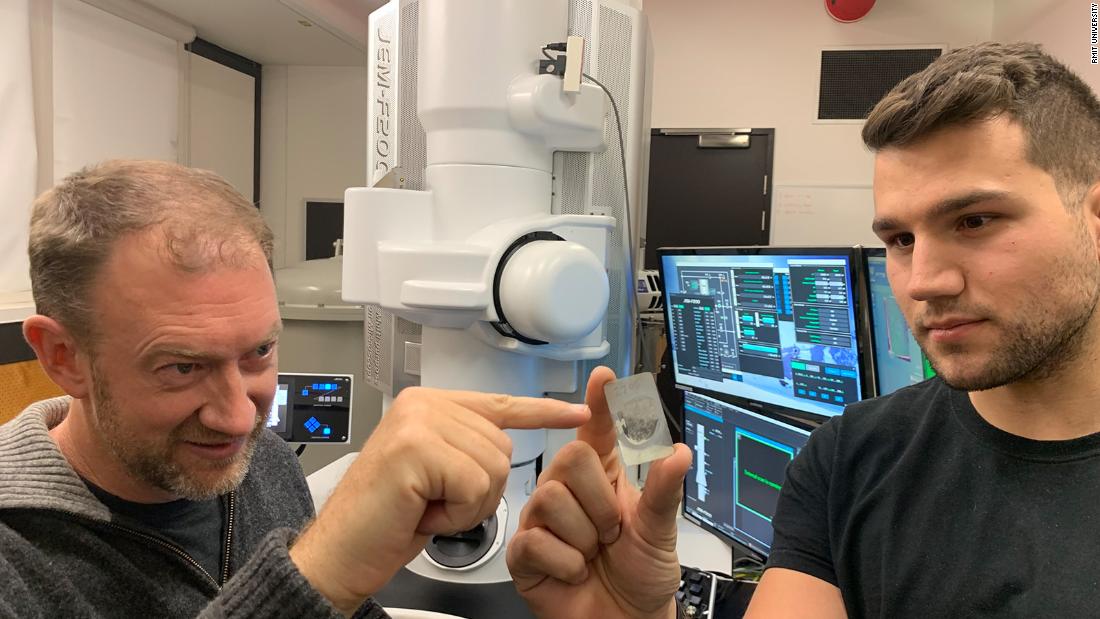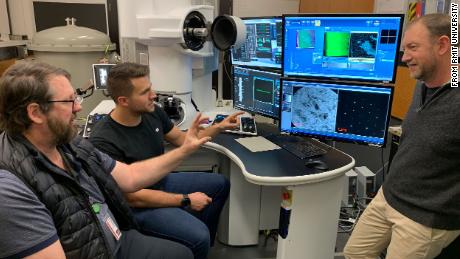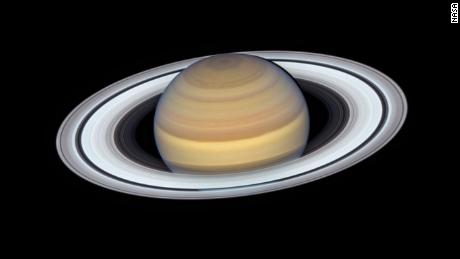
The stone, known as lonsdaleite, has a hardness and power that exceeds that of an everyday diamond. The uncommon mineral arrived right here by means of a meteorite, new analysis has steered.
The revelation began to unfold when geologist Andy Tomkins, a professor at Monash College in Australia, was out in the subject categorizing meteorites. He got here throughout a wierd “bended” form of diamond in a space rock in Northwest Africa, stated research coauthor Alan Salek, a doctoral pupil and researcher at RMIT College in Australia.
Tomkins theorized the meteorite that held the lonsdaleite got here from the mantle of a dwarf planet that existed about 4.5 billion years, Salek stated.
“The dwarf planet was then catastrophically struck by an asteroid, releasing strain and resulting in the formation of those actually unusual diamonds,” he added.
With its cutting-edge strategies and potentialities for the future, the discovery is thrilling, stated Paul Asimow, a professor of geology and geochemistry at the California Institute of Expertise. Asimow was not concerned in the research.
“It actually takes benefit of numerous current developments in microscopy to do what they did in addition to they did it,” Asimow stated.
The crew was capable of analyze the meteorite with the assist of electron microscopy and superior synchrotron methods, which constructed maps of the space object’s parts, together with lonsdaleite, diamond and graphite, based on the research.
Diamonds and lonsdaleite can type in 3 ways. It may be by way of excessive strain and temperature over an extended time frame, which is how diamonds type on the Earth’s floor; the shock of a hypervelocity collision of a meteor; or the launch of vapors from broken-up graphite that will connect to a small diamond fragment and construct upon it, Asimow stated.
The tactic that creates the mineral can affect its measurement, he added. Researchers proposed on this research that the third technique shaped the bigger pattern that that they had discovered.
“Nature has thus offered us with a course of to try to replicate in trade,” Tomkins stated in a information launch. “We expect that lonsdaleite might be used to make tiny, ultra-hard machine elements if we will develop an industrial course of that promotes alternative of pre-shaped graphite elements by lonsdaleite.”

What’s it precisely?
Lengthy earlier than this discovery, scientists have debated the existence of lonsdaleite, Asimow stated.
“It looks like a wierd declare that we’ve a reputation for a factor, and all of us agree what it’s,” he added, “and but there are claims in the group that it is not an actual mineral, it isn’t an actual crystal, that you possibly can have a macroscopic scale.”
Scientists first recognized bits of the mineral in 1967, however they had been minute — about 1 to 2 nanometers, which is 1,000 occasions smaller than what was present in the most up-to-date discovery, Salek stated.
Discovering a much bigger pattern has proven that lonsdaleite is not only an anomaly from different diamonds, Asimow stated.
Common diamonds, reminiscent of the ones you see in positive jewellery, are made out of carbon and have a cubic atomic construction, Salek stated. As the hardest materials identified up till now, they’re additionally utilized in manufacturing.
Lonsdaleite can be product of carbon, however it has an uncommon hexagonal construction as a substitute, he added.
Researchers have provide you with fashions for the construction of lonsdaleite earlier than, they usually theorized the hexagonal construction may make it as much as 58% more durable than common diamonds, Salek stated. This hardness may make the uncommon space diamond a precious useful resource for industrial purposes if scientists can discover a manner to make use of the new technique of manufacturing to create minerals which can be large enough.
What does it imply for us?
Now that scientists learn about this mineral, the discovery raises the query of whether or not they can replicate it.
Instruments reminiscent of noticed blades, drill bits and mining websites must be durably exhausting and put on resistant, so a prepared provide of lonsdaleite may make them carry out even higher, Salek stated. And now with a reputable scientific principle as to how these bigger deposits shaped, a tough blueprint exists to make lonsdaleite in a lab.
From this discovery, we will additionally study extra about the interactions of the universe, stated Phil Sutton, a senior lecturer in astrophysics at the College of Lincoln in the United Kingdom. Sutton was not concerned in the analysis.
In uncovering the story of the place we come from and the way we advanced, he added, it is necessary to know that supplies had been exchanged between environments — even throughout photo voltaic programs.
Scientists named lonsdaleite after crystallographer Dame Kathleen Lonsdale, who in 1945 turned considered one of the first girls elected as a fellow to the Royal Society of London.





